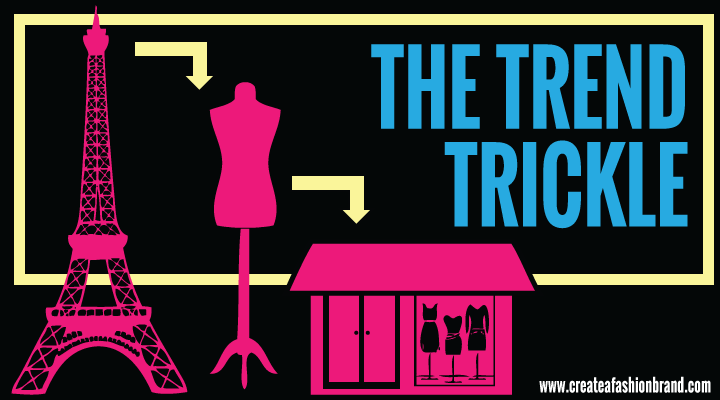There are a number of theories bouncing around the net and in books about how fashion trends are formed. But there are only two processes. Something called Trickle Up, where a trend is developed on the “street” if you like. An idea is created by someone, generally in the way something is worn and is then shared and catches on. The idea is taken on by a retailer to give the public what they desire, or catches the eye of a key designer and incorporated into their collection in some way, and then continues back down the system in the more traditional Trickle Down method.
Trickle Up is usually something based around styling or customisation, but comes from the public. It’s a popular idea that gets traction locally. These things happen all of the time and very few spread further than that. For the few that gain a huge following, they move into the main stream where it then trickles back down. But the general movement of trends is the Trickle Down method. This is where an idea, colour, shape or theme comes from larger designers, then moves through large magazines and blogs reporting on collections and keeps moving into retail where the public buy the items from the high street shops, then finally into market stalls and value brands.
They way in which this is explained by many books ad blogs is not actually complete and quite often concentrates on the catwalk designers and their role. The assumption is that all ideas come from Fashion Houses or catwalk designers who magically all use the same colour, fabric, shape or theme during one season by complete fluke. The process actually begins a long time before that happens, and in the same way that retail designers buy trend information from specialist companies for predictions, these trend companies and catwalk designers also get their information elsewhere too.
The source is something called The Colour Council, which very little is written or known about. All anyone really knows is that the council is made up of key leading figures in the fashion industry who get together in Paris and create seasonal colour palettes and this information then starts a process that trickles down from them to designer, retail and markets. The colours are set and discussed anywhere between 3-4 years in advance of the actual season they are used for and along the way, there are a number of influences that develop and morph the ideas. But one thing is clear. Anyone, like me, who has ever looked through and adapted trends for a specific market, will understand that regardless of the source of information, the colours, themes and shapes are always consistant, as long as the source is a credible one.
Fashion trends are key to many areas of the fashion industry, not just design and retail, so they really are an area that needs attention and often not given enough respect for how complicated they be to predict and adapt. If you are interested in trends for your own business, I would recommend signing up to our newsletter which you can join HERE.
There are also a number of things to get to grips with when developing and understanding trends. One of the most important is the method of adaption you take for your business. You can learn more about that in another post, The Adaption Problem which I would definitely recommend. But let’s get onto the trend trickle itself, otherwise known as Trickle Down Theory. In the image below, you get the traditional Trickle Down system but also some additional areas that the trends effect whilst it trickles down to retail. This model is The Trend System.

